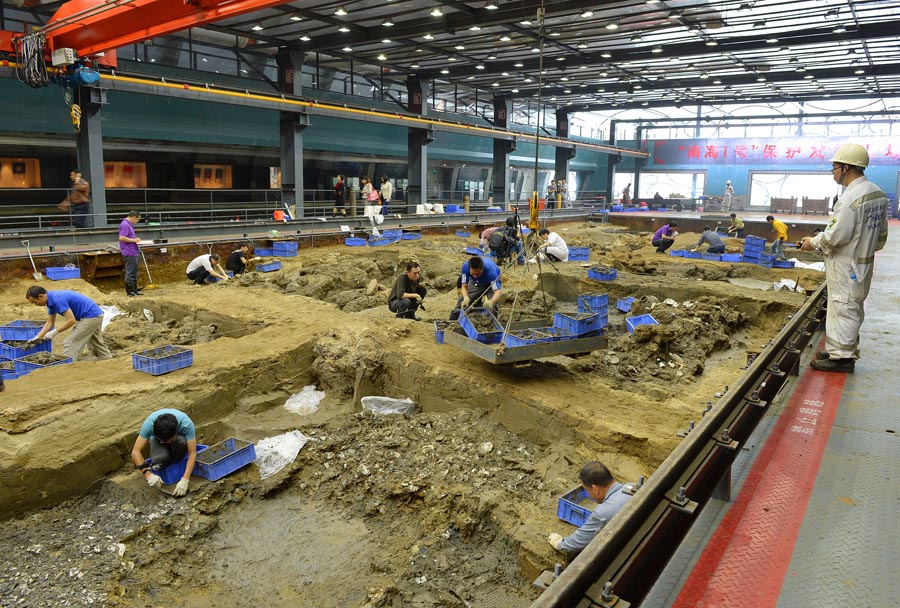 |
|
Archaeologists work in the cabin of Nanhai One, which is now at the Maritime Silk Road Museum of Guangdong. [Photo provided to China Daily] |
"However, unlike the Age of Discovery that led to colonization, the Maritime Silk Road was a peaceful trade route based purely on cultural exchange," he says. "A good example of this is how many countries learned how to make Chinese-style porcelain in those years, and their artistic styles also influenced Chinese products."
He notes that Nanhai One is a microcosm for these exchanges among different civilizations.
"And detailed research of Nanhai One on land shows that the real nautical archaeology is very different to treasure-hunting, which is often done by Western salvage companies," Wang says.
Sun Jian expects further research to help fill in many more gaps of studies into Chinese history.
"Physical evidence of the prosperous trade routes throughout South China Sea is rare," he says. "Nanhai One is just one example, and there is a much wider area that needs to be explored."
China launched its first vessel specifically designed for underwater archaeology in 2014. Since then, archaeologists have been undertaking a comprehensive survey of ancient shipwreck sites within Chinese waters. In December, the National Center of Underwater Cultural Heritage began to construct a research base in Hainan province to support the ongoing studies.
"The first step is to figure out what we have at home," Sun Jian says. "We have made many new findings, but this doesn't necessarily mean we have to immediately launch archaeological excavations. The work needs to be integrated into a long-term plan."
Contact the writer at wangkaihao@chinadaily.com.cn